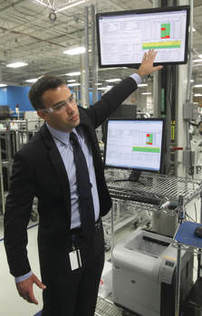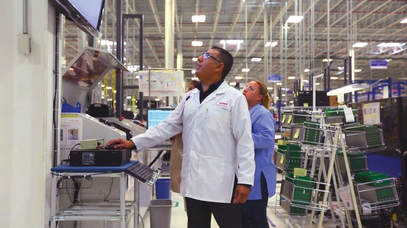Maximize manufacturing success using the internet of things by Sujeet Chand - Rockwell Automation7/17/2017
 Analytics deliver value in devices, across a plant or enterprise-wide. Analytics deliver value in devices, across a plant or enterprise-wide. When Rockwell Automation joined hundreds of other business, government, academic and tech leaders recently in London for Cisco’s IoT World Forum 2017, one topic dominated the event — business outcomes from IoT (Internet of Things) — successes, challenges and lessons learned from the many deployments. Today, organizations are progressing from pilot or proof-of-concept IoT projects to scalable IoT deployments, according to IDC’s Global IoT Decision Maker Survey. About 31% of those surveyed said they’ve already launched IoT solutions and another 43% said they’re looking to deploy solutions in the next 12 months. Analytics deliver value in devices, across a plant or enterprise-wide. Answers hiding in analytics The number of IoT devices in industrial control systems continues to grow at a rapid pace. With this growth in networked devices comes a significant increase in the volume of data that industrial companies must be able to manage and leverage for business outcomes. Scalable, flexible analytics can contextualize your information and deliver value incrementally in devices, the plant and the enterprise. Examples include:
Local maintenance analytics, for example, can use device-level data to produce real-time alerts about critical device and machine health. This can help you implement faster decision-making closer to the process, where time is critical. Machine-level or plant-level analytics implemented in edge devices such as controllers and plant-floor servers can be used to optimize machines, processes and plants. They also can be leveraged to implement predictive-maintenance strategies. Enterprise-level analytics integrate plant-floor information with business intelligence. This can help you improve your operational productivity or compliance efforts across several sites.  Getting data at device level can produce results in real time. Getting data at device level can produce results in real time. Industrial security: Solutions from plant to enterprise The top IoT challenge cited by respondents in the IDC survey is security (26%). It’s not surprising. Security can seem like an overwhelming burden given the challenges you face, from legacy equipment that wasn’t designed for security to more easily accessible information that can be vulnerable to both malicious and non-malicious threats. In the face of these challenges, taking a holistic approach to industrial security can put your organization in line with industry best practices for protecting intellectual property and other assets. Upon the completion of your assessment, you should understand your security posture and the specific mitigation techniques needed to bring your operation to an acceptable risk level. From there, your industrial security program should adopt a defense-in-depth (DiD) security approach. DiD security adheres to the principle that any single point of protection can and probably will be defeated. It uses physical, electronic and procedural safeguards to create multiple layers of protection throughout your enterprise. Finally, make a point to only work with trusted vendors. Request their security policies and practices, and make sure they help – not hurt – your ability to meet your security goals. Comments are closed.
|
|
Copyright © 2024 Metropolitan Milwaukee Association of Commerce
All rights reserved. 301 W Wisconsin Ave., Ste. 220 | Milwaukee, WI 53203 Tel 414/287-4100 | Fax 414/271-7753 | [email protected] | Privacy Policy |
|

 RSS Feed
RSS Feed